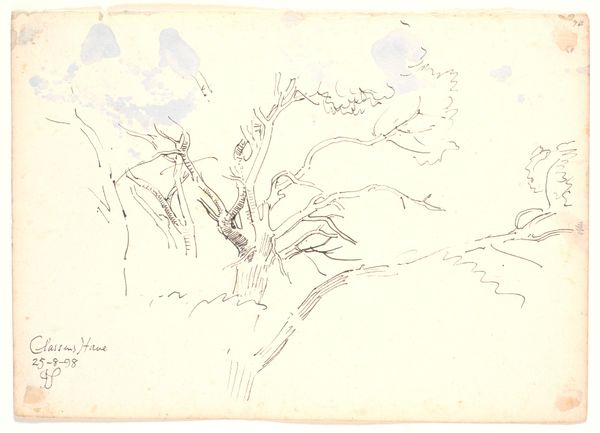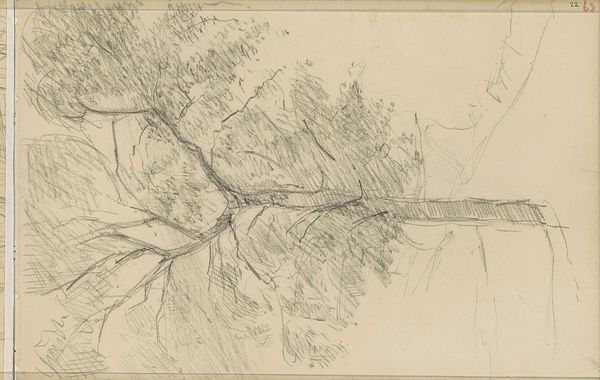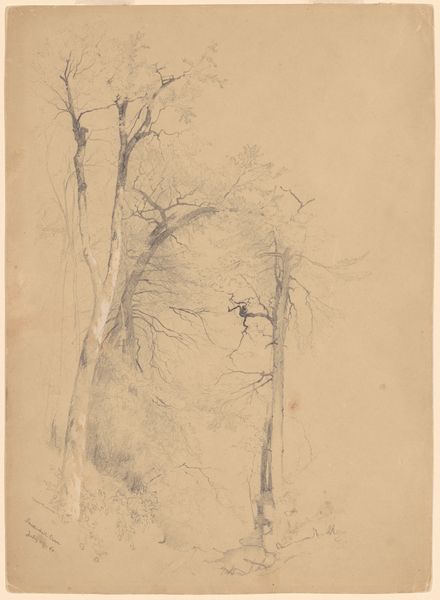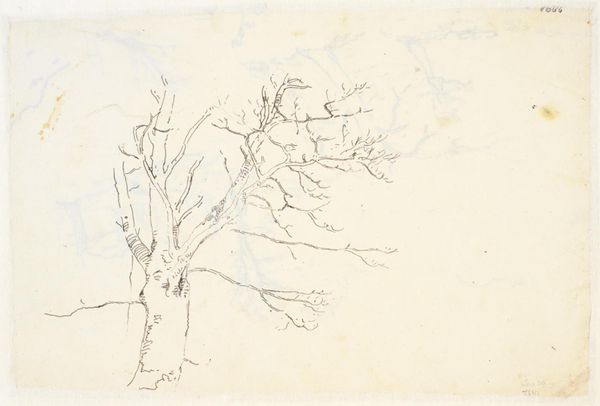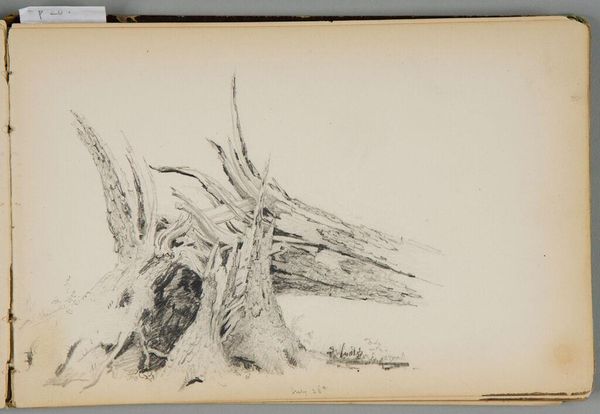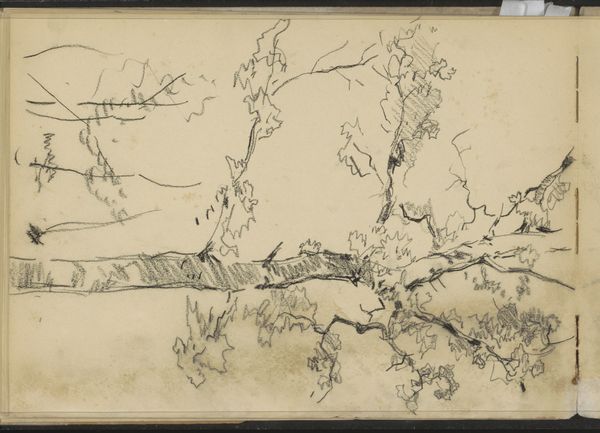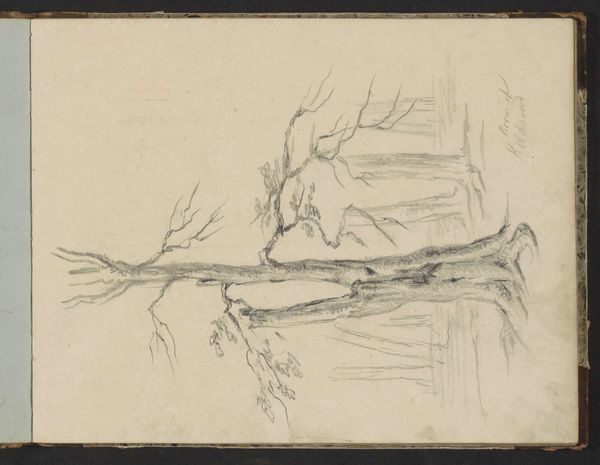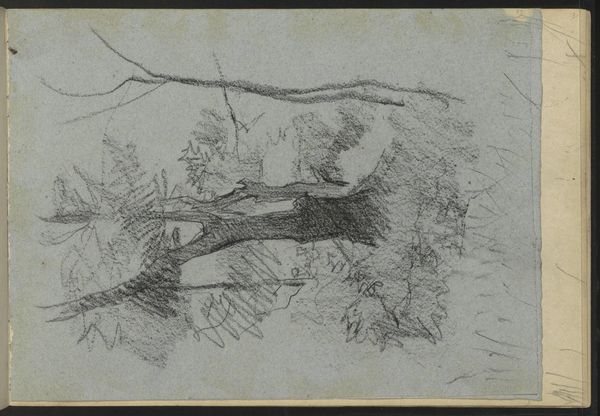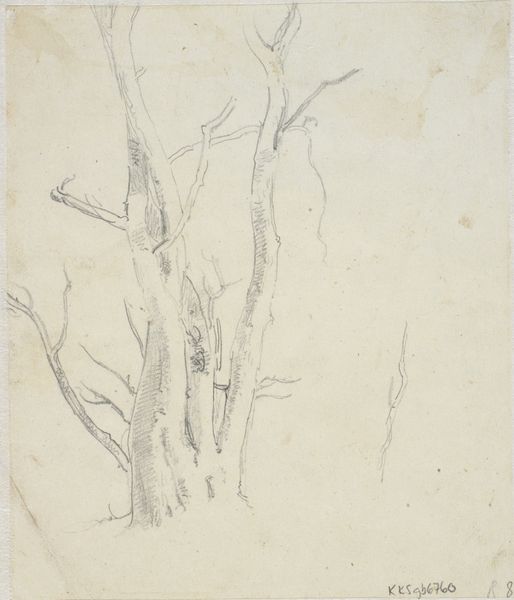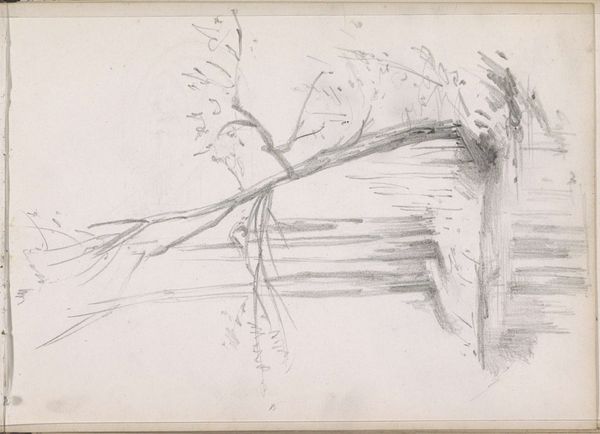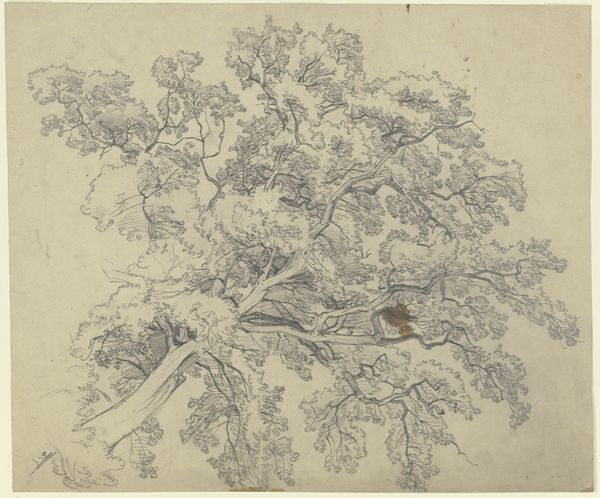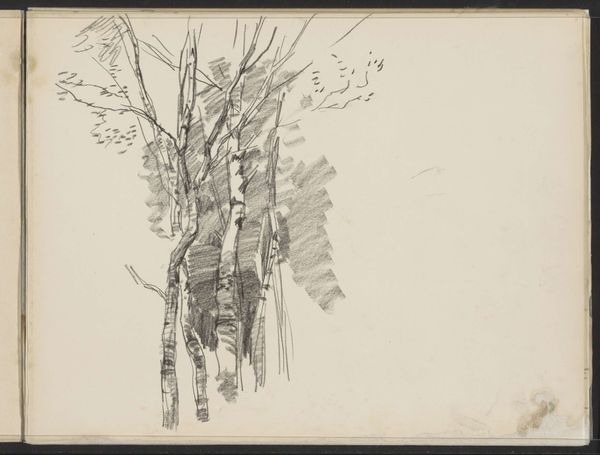
drawing, pencil
#
drawing
#
landscape
#
pencil
#
line
#
realism
Dimensions: image (irregular): 25.72 × 26.67 cm (10 1/8 × 10 1/2 in.) sheet: 26.99 × 36.51 cm (10 5/8 × 14 3/8 in.)
Copyright: National Gallery of Art: CC0 1.0
Curator: There’s something melancholic, almost gothic, about David Johnson’s "Tree Trunks" from the 1860s. I find the stark lines quite evocative. Editor: Oh, I completely agree! It’s like he’s captured a moment of stillness, of reflection. And it's just pencil on paper—stripped back. Curator: It's a drawing focused entirely on the essence of the trees themselves. No distracting foliage, no romantic backdrop, just raw, naked timber. As an iconographer, do certain elements jump out? Editor: The linear quality is arresting; it is the language of architecture. It almost suggests the structure of ruins and decay – like skeletal remains, calling forth vanitas traditions of memento mori. Yet the trees reach upwards, like hopeful figures! Curator: Fascinating to think of them as allegorical figures, reaching for enlightenment in a material sense or even heavenward. Perhaps the artist invites the viewer to reflect on temporality and their own fleeting time. Editor: The texture! Oh, to feel it through the eye! The artist meticulously renders every knot and twist. Each line is charged with symbolic potential. They could suggest the winding path of fate, or maybe just the resilience of life… and perhaps both are interwoven! Curator: What I also admire is how the artist seems to balance precision with expressive looseness. Some areas are tightly rendered; other lines are almost scribbled in with nervous energy. It feels spontaneous, almost unfinished. Editor: Yes! The artist seems caught between two worlds, two ways of expressing; as if one reality keeps disrupting another! The result has a powerful liminal presence. That tension is its enduring power. Well, that is my reading. Curator: No, I think that rings absolutely true. David Johnson provides us with the quiet opportunity to ponder time, loss, resilience and regeneration – and to admire pencil work, beautifully. Editor: A potent and poignant work! Now that you mention temporality, it would be amazing to return in one hundred years and reconsider how its symbols speak to future observers.
Comments
No comments
Be the first to comment and join the conversation on the ultimate creative platform.
